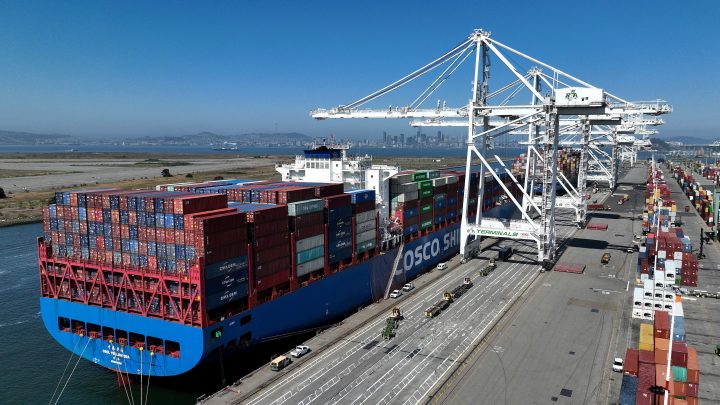
The cost of imports from Asia and North America are moving in opposite directions
The cost of imports from Asia and North America are moving in opposite directions

The price of imported products rose 0.4% in March, according to the Labor Department. That’s a bigger monthly increase than in February — thanks in large part to the cost of imported fuel. Things get more interesting when you look at where this import inflation is coming from.
In March, imports from Mexico and Canada got more expensive. But imports from China and Japan got cheaper. What’s going on?
Part of it has to do with the types of products those countries are sending us, said Ed Gresser, director for trade and global markets at the Progressive Policy Institute.
“Canada and Mexico are big sources of cars and auto parts and of energy,” he said. “Japan and China, much more consumer manufactured goods, technology products.”
And while consumer goods and electronics got cheaper in March, auto and energy imports got more expensive. “That will show up more in our trade with Canada and Mexico than anywhere else because the weight of those products is larger there,” Gresser said.
U.S. companies have also been trading more with Mexico and Canada lately, especially after all that trade drama with China in the last few years and the supply chain congestion earlier in the pandemic.
Teresa Fort, a professor of business administration at Dartmouth College, said U.S. companies see Mexico in particular as a good substitute, with its proximity and low-cost manufacturing.
“So you can see firms that are shifting from producing in China to producing in Mexico for the U.S. market,” she said.
Import prices are also being affected by the value of those countries’ currencies.
Meagan Schoenberger, senior economist at KPMG, said that investment in Mexico is helping to push up the value of the peso, which makes imports from there more expensive.
Meanwhile, the Japanese yen is way down.
“We would expect import prices to fall from Japan, given depreciation in their own currency,” Schoenberger said.
She said China’s currency is down, too. In large part because its central bank is trying to stimulate a stagnant economy.
“And so they’re cutting rates, which is diverging from the Federal Reserve, which can, for these central banks, cause currency depreciation,” she said.
And that helps to make imports from China cheaper too.
There’s a lot happening in the world. Through it all, Marketplace is here for you.
You rely on Marketplace to break down the world’s events and tell you how it affects you in a fact-based, approachable way. We rely on your financial support to keep making that possible.
Your donation today powers the independent journalism that you rely on. For just $5/month, you can help sustain Marketplace so we can keep reporting on the things that matter to you.

















